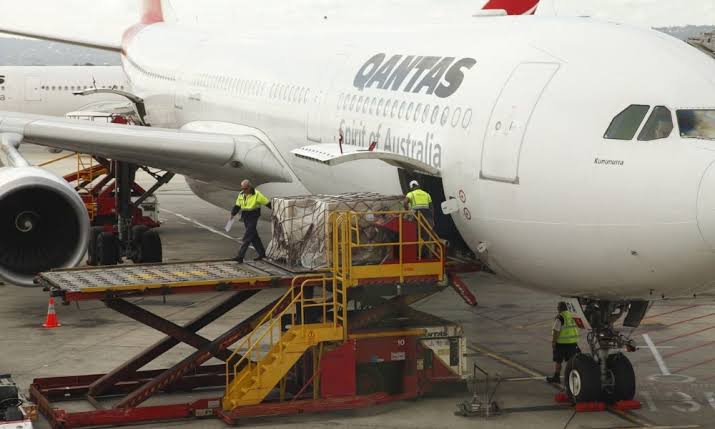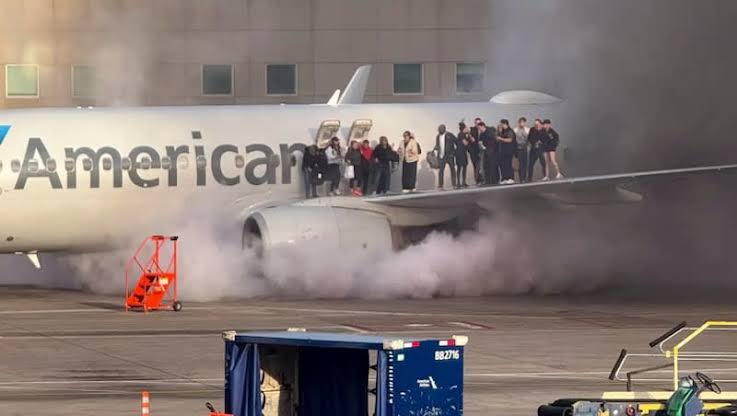Qantas airways Issues Urgent Statement Due To Recent Mishap
Qantas Airways Issues Urgent Statement Following Mid-Flight Engine Failure
Sydney, Australia
Qantas Airways, Australia’s flagship carrier, has issued an urgent public statement following a mid-air engine failure that occurred during one of its domestic flights earlier this month. The incident, which has since drawn national attention, led to an emergency landing and has prompted a thorough investigation by both airline and aviation authorities.
The Incident: What Happened?
The event unfolded on November 8, 2024, when Qantas Flight QF520 departed from Sydney en route to Brisbane. Approximately 15 minutes after takeoff, passengers onboard reported hearing a loud bang from the right side of the aircraft, followed by vibrations. The pilots quickly identified the issue as a contained engine failure—where damage remains inside the engine casing—and began emergency protocols.
The aircraft, a Boeing 737-800, immediately turned back toward Sydney Airport. After circling briefly to burn fuel, the plane made a safe landing. Emergency services were on standby but were not needed as the landing was executed without further incident. All passengers and crew were unharmed.
Qantas’ Official Statement
In an official statement released through the Qantas Newsroom, Chief Pilot Captain Richard Tobiano confirmed the details of the emergency landing and reassured the public about the airline’s commitment to safety.
“Our flight crew handled the situation exactly as they are trained to do,” said Captain Tobiano. “The aircraft returned safely to Sydney Airport without injury to passengers or crew. We understand that such events can be frightening, but we want to reassure everyone that our planes are built to withstand these situations, and our pilots are among the best trained in the world.”
Qantas also confirmed that the aircraft underwent a full technical inspection, and the incident was reported to the Australian Transport Safety Bureau (ATSB) for independent investigation.
Aftermath and Airport Disruption
The engine failure led to debris being ejected onto one of Sydney Airport’s busiest runways, Runway 34R. This triggered a grass fire that spread across a large section of the runway. Firefighters responded quickly and brought the blaze under control within minutes. Fortunately, no airport personnel or passengers were injured during the fire.
The incident caused significant disruption to airport operations. Airservices Australia, the government body responsible for managing air traffic, issued a ground stop that lasted 47 minutes. During this time, eleven domestic flights were canceled, and several others were diverted to alternative airports. International flights experienced moderate delays.
Investigation Underway
The ATSB confirmed it has launched an investigation into the incident, collecting data from the aircraft’s flight recorders and interviewing the flight crew. Investigators are also examining engine parts and maintenance records to determine the root cause of the failure.
“We are treating this incident seriously and will conduct a comprehensive safety review,” the ATSB said in a press release. “A preliminary report is expected within the next two months, with a final report to follow once all data has been analyzed.”
The engine manufacturer, CFM International, has also been contacted to assist with technical evaluations and diagnostics.
History of Recent Maintenance Issues
While Qantas has long been considered one of the safest airlines in the world, the recent incident has raised fresh concerns. Earlier in 2024, the airline faced criticism after a maintenance oversight was reported by the ATSB. In that case, a one-meter tool was accidentally left inside the engine of an Airbus A380 during routine maintenance—a serious lapse that went unnoticed for several flights.
In response, Qantas pledged to improve its maintenance protocols and oversight. The airline has since announced plans to open a new engineering academy in 2025, aimed at training a new generation of aircraft technicians and engineers. This initiative is part of a broader $100 million investment into safety and operational infrastructure.
Public Reaction and Passenger Statements
Despite the frightening nature of the recent incident, passengers aboard Flight QF520 praised the crew for their calm demeanor and professionalism during the emergency.
“I heard the bang and felt the plane shake a bit, and it was definitely scary,” said passenger Lucy Hart, who was seated near the right wing. “But the pilot and crew were amazing. They kept us informed and stayed calm the whole time. I never felt like we were in real danger.”
Qantas has offered refunds, flight rebookings, and counseling services to affected passengers.
Industry Experts Weigh In
Aviation analysts say that while engine failures are rare, they are not unheard of. What matters most is how the airline and crew respond, and in this case, the response was textbook.
“A contained engine failure is always serious, but it’s important to note that aircraft are designed with redundancy in mind,” said Dr. Mark Willis, an aviation safety expert from the University of New South Wales. “Qantas has a reputation for excellence in safety, and this incident doesn’t change that. But it does highlight the importance of continuous vigilance, especially in maintenance.”
Looking Ahead
Qantas has confirmed that the aircraft involved in the incident will not return to service until a full investigation is complete and all necessary repairs are made. The airline is also conducting a fleet-wide review of similar engine types to ensure no systemic issues are present.
Qantas CEO Vanessa Hudson issued a personal message to passengers, stating: “Safety is at the heart of everything we do. We are fully cooperating with the ATSB and taking all necessary steps to prevent such incidents in the future. We thank our customers for their trust and patience.”
As the investigation unfolds, both Qantas and Australian aviation regulators are under pressure to ensure that the airline’s spotless safety record remains untarnished. Meanwhile, industry insiders expect that lessons learned from this event will contribute to even stronger safety practices in the future.






